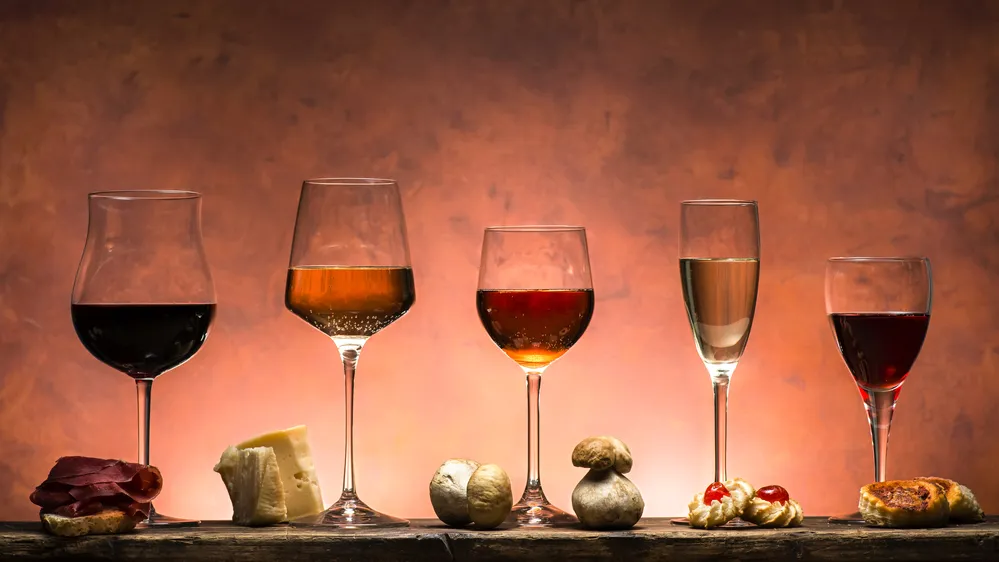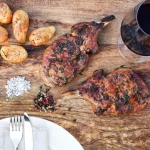You’re getting into the fantastic world of wine and want to transition to pairing your favorite drinks with your best meals. However, this process isn’t something you should approach without a careful plan.
If you don’t understand how to pair wine with food properly, you will have a significant culinary disaster.
So, read through the information contained below to learn more about how to pair your food with wine, and read the bonus list at the end to know some of my personal favorite pairings.

How to Pair Wine With Food
Pairing food with wine requires a few simple steps to create a complex and complimentary dish that just about anybody will love.
However, you can’t just buy a bottle of wine and hope for the best when mixing it with your food.
It is essential to understand the various elements that impact how well your wine combines with your food. These elements are outlined below to make your choice easier.
1. Choose a Wine You Like
This step might seem forehead-slapping obvious, but you’d be surprised how often people try to pair food using a wine that they don’t like to drink.
Why would they do this when they could choose a wine they like?
Often, they try to follow wine pairing guides and think that they might enjoy a glass of wine with food. Unfortunately, that’s very rarely the case, and you’ll likely be disappointed.
2. Balance the Wine
When picking a wine, it is crucial to find one that doesn’t overwhelm the power of your food and vice versa.
This balancing act is often challenging and may vary depending on your personal preference.
For example, some people may enjoy sweet wines with sweet foods while others do not. Therefore, you need to be pretty careful and experiment a little to get the best results when taking this approach.
3. Pair Your Wine with the Main Flavor of the Dish
Even if you’re eating multiple flavors with your meal (such as mixing chicken and rice or vegetables), you should focus on the prominent flavor instead of trying to compliment all of them.
Simply put, it is impossible to complement every different taste in a complex dish perfectly.
However, if you balance the wine with the prominent flavor, you’re less likely to get disappointed with the result.
As an example, a pasta sauce is what you pair with the wine, not the pasta itself. Another example is pork. Does it have a glaze? Pair you wine with the pork glaze instead.
Consider the Flavor Profile When Pairing Wine

Each meal and wine you enjoy will have a few different taste profiles.
These include sweet, salty, bitter, fatty, acidic, and alcohol.
Generally, you can blend these other profiles to get exciting results.
These include pairing fatty foods with an acidic taste to balance their profile or using a bitter and salty flavor to enhance the potency of each option.
Research how these different profiles work together. Doing so should give you an idea of the various possible blends between wine and food flavors.
Handy Wine Tips
There are a few simple tips to keep in mind that will help make this process smoother.
First, sweet wines will blend well with sweeter foods because they have sweeter notes and aftertastes. That may seem obvious, but many people don’t understand this simple fact and make serious pairing mistakes.
If you want a more bitter taste, try a bottle of red wine, as whites typically have a less potent bite. Pair them with sweeter or saltier foods to bring out these unique flavors.
Lastly, white and rosé wines have more acidity, so keep that in mind when pairing these wines with any foods you enjoy.
Wine Pairing Methods

You can consider contrasting pairing or congruent (harmonious) pairings when pairing wine with your meals.
These two different options each have benefits that make them worth considering, though your enjoyment will, of course, depend on your taste preferences.
Contrasting Pairing
This method (also called complementary pairing) balances one potent flavor that overrides but still compliments the taste of the food.
For example, a dry wine may blend well with sweeter meats because the sharpness of the wine’s flavor may make the meat taste even more precious as a result.
Congruent Pairing (Harmonious)
By contrast, congruent pairing takes two similar flavors or textures and amplifies them by mixing them.
For example, a reasonably rich chardonnay often blends well with creamy sauces and creates an amplified taste that you may enjoy. The choice ultimately remains yours, as always.
Wine Pairing Suggestions: Our Top Picks
We brainstormed some of the best wine and food pairings available today and included them here in an extensive list.
Our descriptions were kept short deliberately to make room for more listings and give you room to experiment. As always, we encourage our readers to try different variations on these pairings that will make your experience more personal for your needs.
Cabernet and Red Meat
If you enjoy red meat like burgers or pork, you might want to consider a Cabernet. This wine has a diverse and broad taste profile that will go well with most red meat dishes.
Rosé and Cheese
The cliché states that wine and cheese go perfectly together.
While that is true, Rosé often goes best with various types of cheesy dishes because of its acidity and fruity undertones.
Sauvignon Blanc and Tart Meals
If you’re someone who loves tart meals or those with a slightly bitter kick, you might love Sauvignon Blanc. This fairly dense wine often brings out the best in tart foods.
Rioja and Lamb (or Other Tender Meats)
If you plan on making a meal with tender meat, you might want to try rioja. It goes particularly well with lamb, though it blends well with other types of pretty tender meats.
Pinot Noir and Pizzas
Try a pizza with mushrooms or rich pepperoni or sausage paired with pinot noir to get a really satisfying taste. Then, add a little goat cheese to make the pizza even richer in texture.
Chardonnay and Seafood
If you’re a fan of seafood, buy a bottle of chardonnay.
This wine will blend well with just about any seafood, particularly shellfish like shrimp.
Riesling and Pork
A delicious pork meal may blend well with a riesling, as it has a high level of acidity and a little sweetness. That flavor combination goes well with the sweet pork.
Sparkling Wines and Salty Foods
Salty foods may become overpowering with some wines, particularly those with a drier taste.
However, sparkling wines perfectly complement salty foods by adding a touch of sweetness.
Pinot Grigio and Seafood
Those who don’t like pinot grigio or who want a lighter taste with their seafood may prefer pinot with their fish.
It is particularly good with white fish or other fairly potent fish flavors.
- Shrimp Cocktail (and More) Wine Pairing Guide - 09/06/2022
- What Wine Serving Sizes Look Like: Standard Size and More - 08/06/2022
- How Much Sugar is in Wine: Glass and Bottle Sugar Content - 08/06/2022






